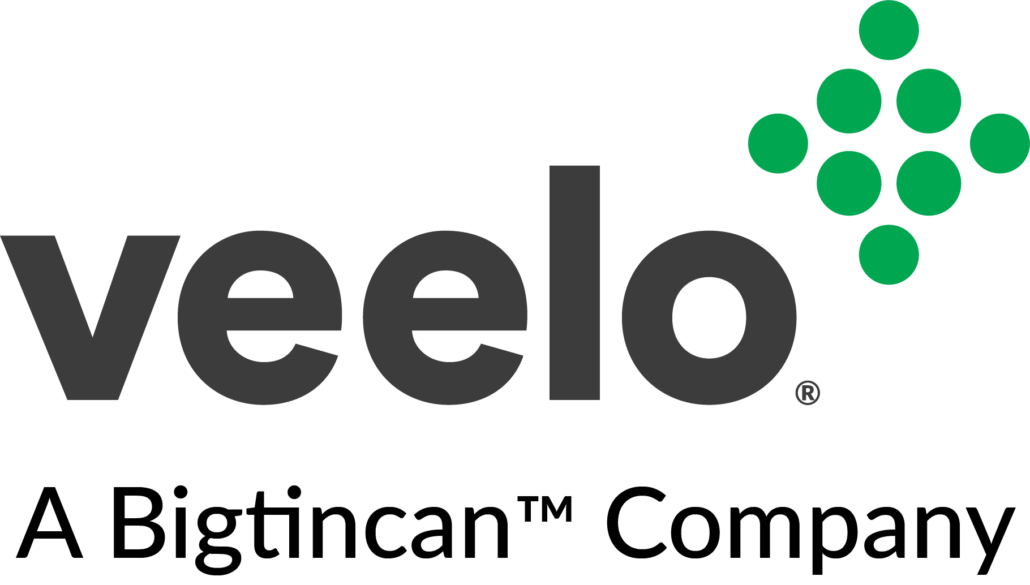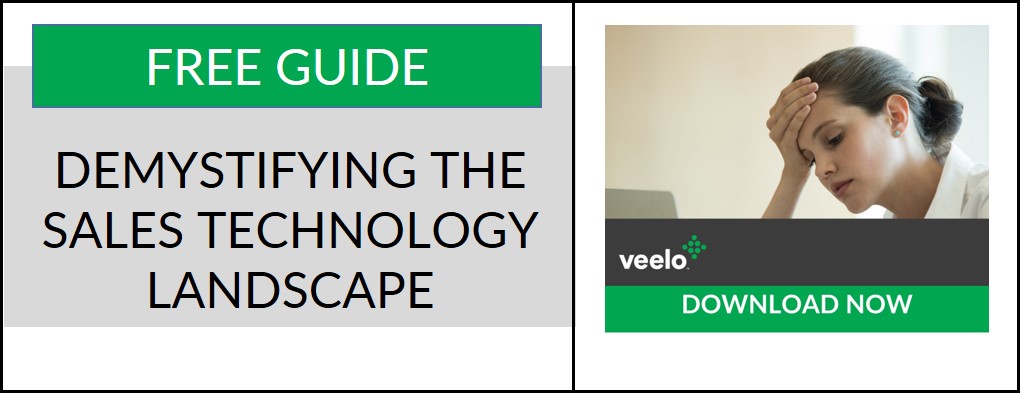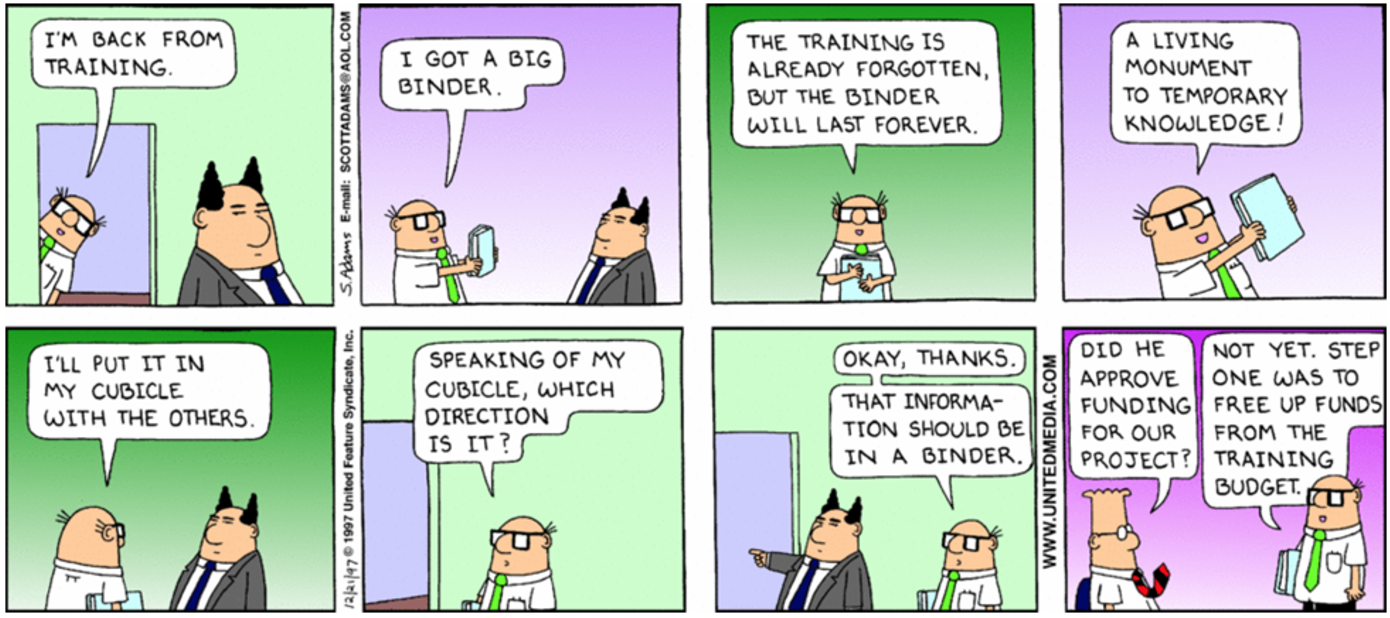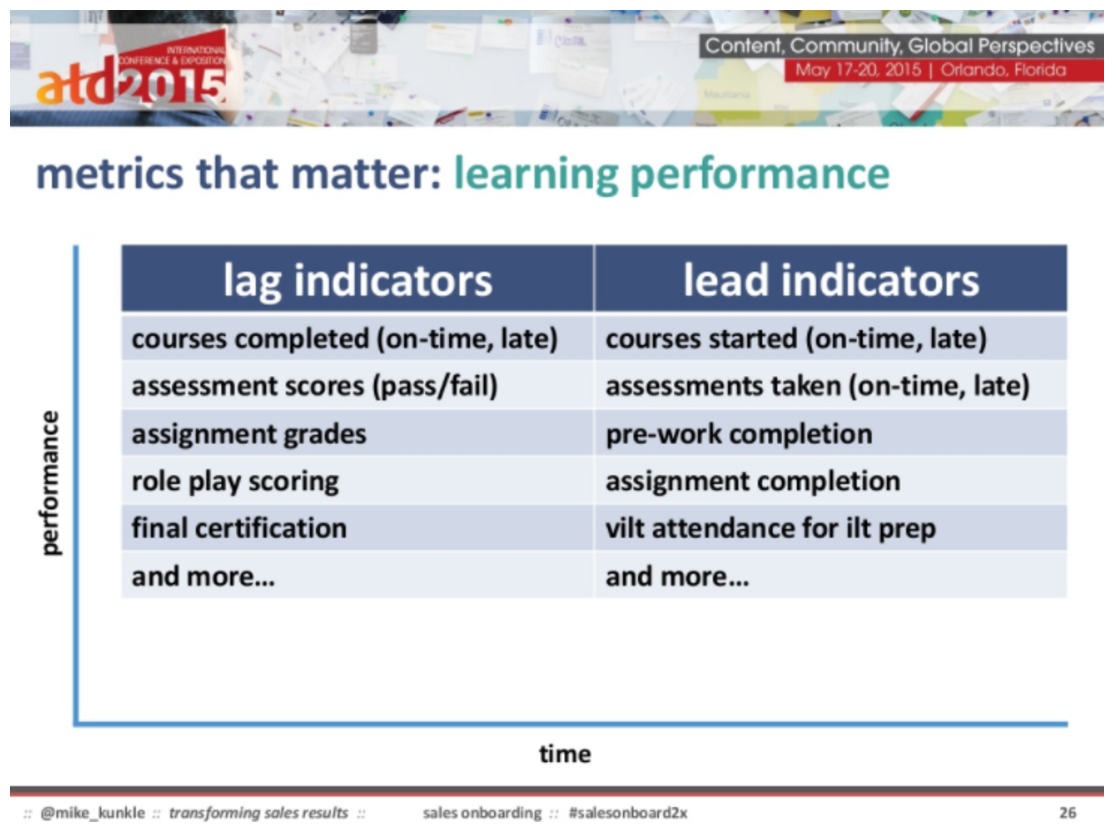Using Content to Enable Sales: The Challenges & Solutions
According to DemandGen Report, 95% of buyers choose a solution provider that “provided them with ample content to help navigate through each stage of the buying process.” Even still, 90% of B2B sellers don’t use sales content (Forrester).
You’re probably wondering why that is, and you should be. The fact of the matter is that sellers don’t use content because it is either irrelevant, outdated, or difficult to customize and share. If you’re in sales enablement or marketing, this should be extremely concerning to you.
To better understand why, let’s take a step back and look at who creates content for salespeople. Our friends at CSO Insights recently conducted a study and found that content used specifically for salespeople is created by:
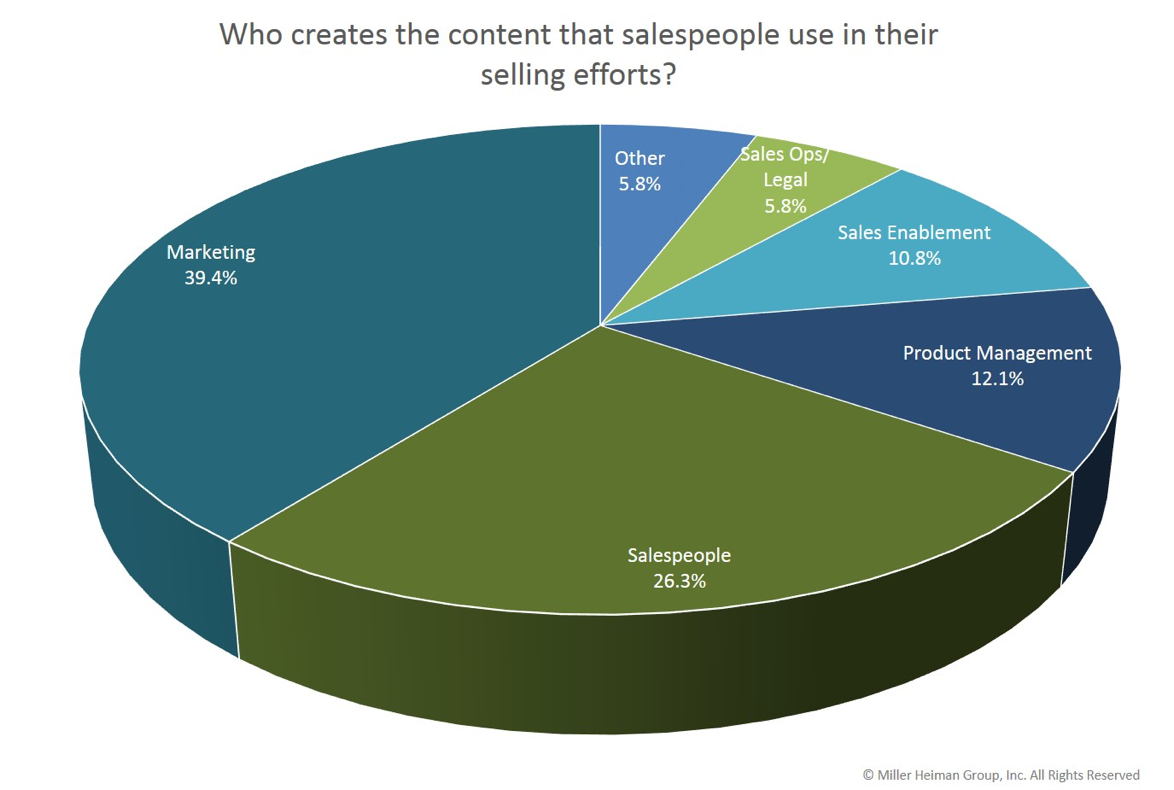
The first thing that comes to mind when I look at these numbers is that with so many functions creating content for sales, it’s no wonder why it takes sales such a long time to find relevant content. Unless you’re fortunate enough to work in an organization where there is very tight alignment between product, sales, and marketing, there’s a good chance that these teams are working in silos and distributing content through multiple channels.
My next observation is that salespeople are creating way more content than they should be, and as a result, they are losing valuable selling time. Salespeople should only have to tailor and customize existing content. Why are salespeople creating so much content on their own? The two most obvious answers are 1) they can’t quickly and easily find the content they need, or 2) the content simply doesn’t exist.
In order to enable sales with content, sales must be able to find and share content. So how can we solve these common challenges, and how do these solutions better allow us to do what we all want to do – enable sales?
Let’s start with the fact that a lot of the content that sales needs may not yet exist. In order to address this, you should:
Conduct a content audit
The best first step to take is to determine what content exists and where it’s located. It’s likely that content is distributed across multiple repositories, so you’ll need to search through them and identify all relevant sales content.
Map content to buying stages
Once you identified all existing sales content, you’ll then want to map each piece to one of the sales stages. This exercise will not only clarify how and when each piece of content should be used, but it’s going to help you identify existing gaps. If you find that supporting content doesn’t exist for particular sales stages, it’s safe to assume that sales may be spending time filling those gaps on their own. However, before you start creating content, it’s best to engage with sales first.
Engage with sales
In order to fully address content challenges as it pertains to sales, you’ll need to engage with sales. For the content that does exist and can be mapped to a buying stage, ask sales if they use it. If not, find out why. Are they unable to find it? Is the content not what they need (e.g. not formatted correctly, not conversational enough, etc)? Answers to these questions will help inform further solutions.
Develop a strategy and build a plan
You should be equipped with enough information now to develop a strategy that addresses these challenges.
If a common response from sales is that they’re not able to find the content, you’ll need to think about how you can centralize content that’s easy for sales to find. Sales Enablement solutions like Veelo address this in a few ways.
1) Sales enablement tools should connect to all disparate repositories and centralize the content in one place. Not only does Veelo act as the single source of truth for all sales content, but it also can live within the CRM or email client so that salespeople never need to leave their workspace to find what they need.
2) Content recommendations and intelligent search utilize machine learning to proactively recommend the right piece of the content to the seller depending on each unique selling situation. Our algorithms will analyze various fields in the CRM such as sales stage, vertical and more, and recommend the best pieces of content to use. If a rep is looking for a particular piece of content, intelligent (or semantic) search simplifies the process of finding it greatly, taking only seconds to locate and share.
On the other hand, if the most common response from sales is that the content doesn’t exist, now you have a content problem and will need to work cross-functionally with the relevant teams to develop the content needed. In some cases, you may need to work with marketing, product and sales ops, depending on which parts of the sales cycle are lacking the most.
And then finally, measure measure measure!
You should be measuring content engagement and usage to better understand the type of content that is most effective and type that is least effective. Some things you’ll want to measure:
- Content usage
- Content sharing
- Track content by sales stage
- Attribute content to deals won
- Correlate content to sales stage progression
- Measure productivity gains
You may have tools in place that allow you to track these metrics, or you may need to consider adopting a new technology such as a sales enablement solution which is built from the ground up to support sales readiness from end to end.
Content-related challenges are some of the most common that plague sales teams. They’re known to reduce productivity, extend sales cycles and limit the effectiveness of your sellers. Take the necessary steps to address these challenges and you’re sure to be seeing productivity gains and happier reps.
If you’d like to see how Veelo uniquely addresses these challenges and enables your sales team, schedule a demo with us and let us show you.
